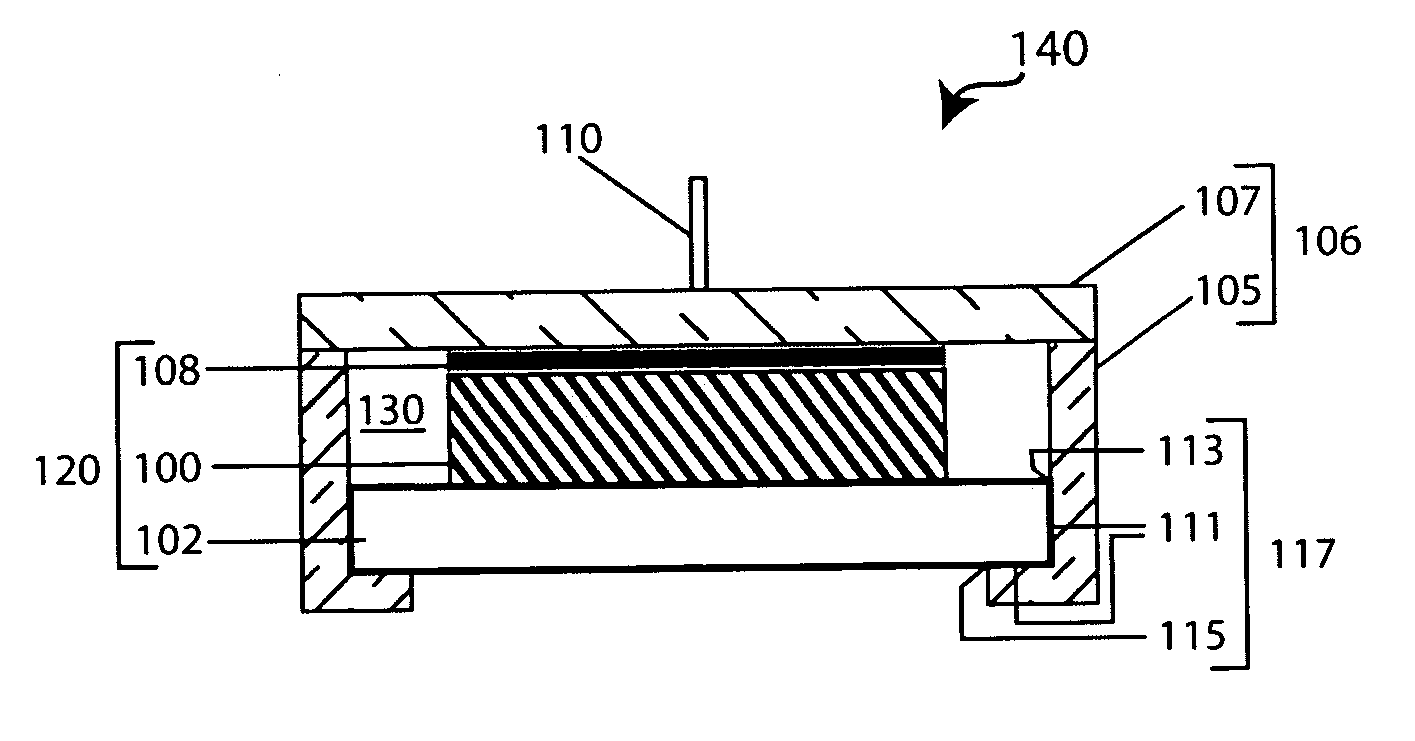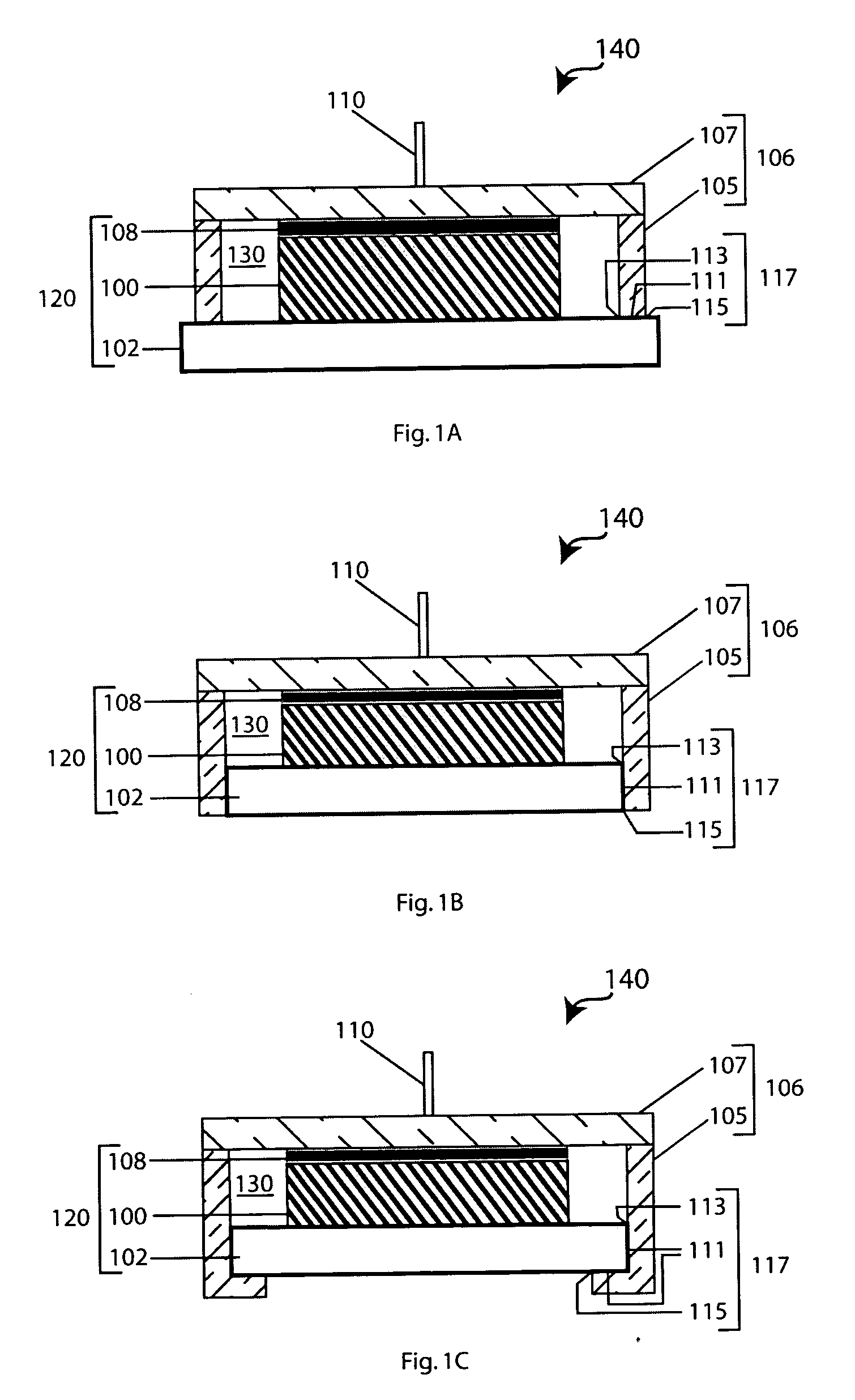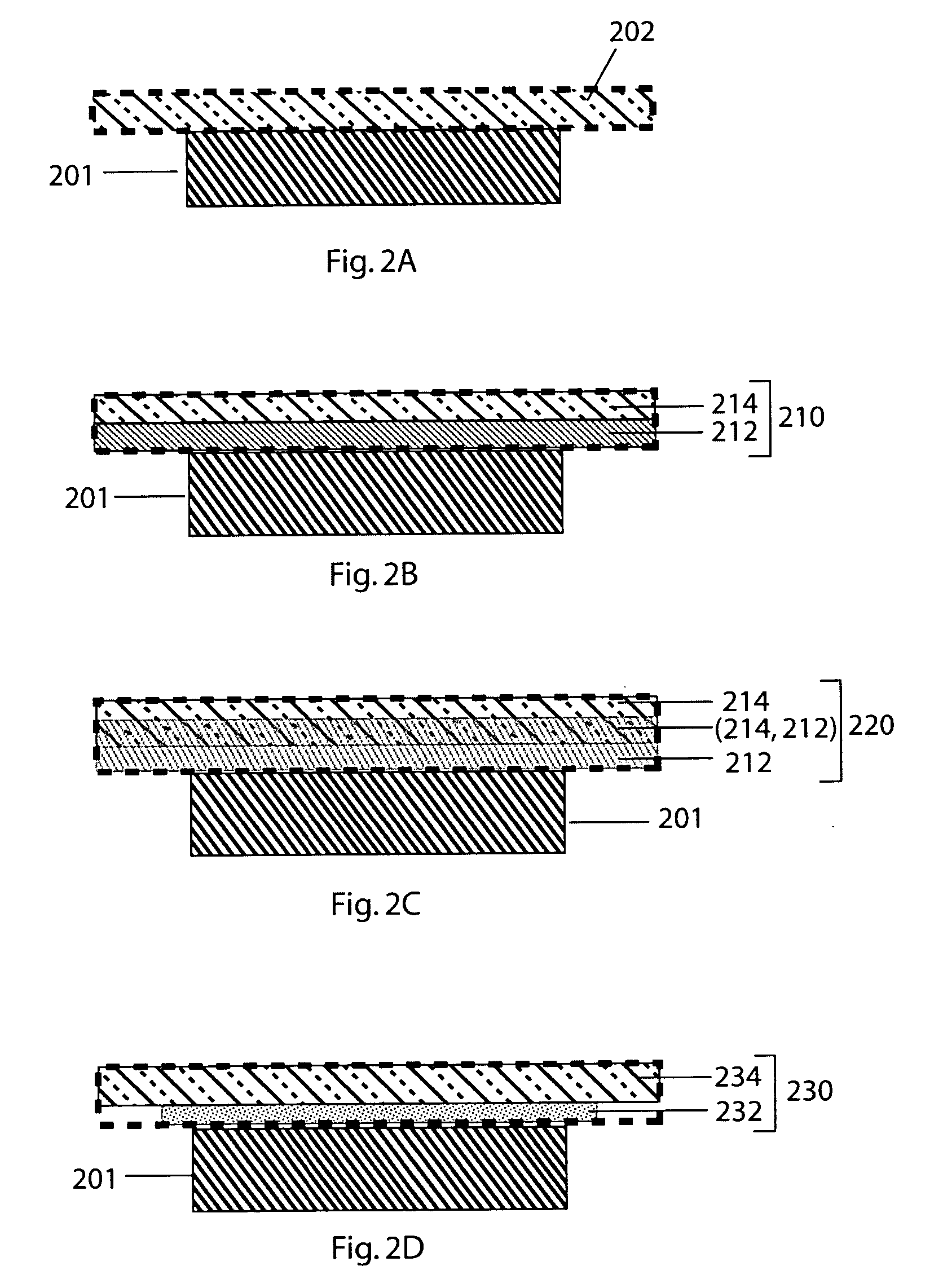Polymer adhesive seals for protected anode architectures
a technology of anode structure and polymer adhesive seal, which is applied in the direction of non-aqueous electrolyte cells, cell components, cell component details, etc., can solve the problems of corroding or degrading in a variety of electrolytes, such as aqueous and even non-aqueous systems, and alkali metal anodes based on li
- Summary
- Abstract
- Description
- Claims
- Application Information
AI Technical Summary
Benefits of technology
Problems solved by technology
Method used
Image
Examples
example 1
Demonstration of Effectiveness of Polymer Adhesive Seal
[0092] A few ml of Hysol E 120 HP were dispensed from the 50 ml dual cartridge (Item 29353) onto a glass plate and thoroughly mixed. The mixed adhesive was transferred to the end of a 9 cm long pyrex tube having an OD of 25 mm and wall thickness of 1.5 mm and the adhesive coated pyrex tube was pressed against the top surface of a 1″×1″ glass-ceramic plate supplied by the OHARA Corporation. The adhesive was cured at 25° C. for a period of 18-20 hours. The bonded plate / tube assembly was attached to a Varian 938-41 helium leak detector. The helium leak detector showed no leak through the seal when the volume was evacuated and the helium tracer probe was used. The sensitivity of the detector was 2×10−10 atm cc / sec for helium.
example 2
Testing of Protected Lithium Anodes Having Polymer Adhesive Seals in Various Aqueous Catholytes
[0093] A number of protected anodes were constructed using seals between 1″×1″ OHARA plates and glass tubes as described in Example 1. Lithium electrodes were fabricated by cutting circular disks of ⅝″ diameter from lithium foil having a thickness of 0.2 to 4 mm. The lithium disks were pressed into a nickel foil current collector with a nickel wire for current collection. An interlayer between the lithium electrode and the glass-ceramic solid electrolyte consisted of a microporous membrane immersed in a non-aqueous solvent with a dissolved supporting electrolyte salt. Microporous membranes were made from Celgard disks of 13 / 16″ diameter cut from Celgard 3401 of 25 μm thickness. The Celgard disks were placed inside the pyrex tube against the glass-ceramic membrane, and 750 μl of—1.0 M supporting electrolyte salt in organic solvent. The electrolyte salts were chosen from the list: LiClO4, L...
example 3
Long Term Testing of a Protected Lithium Anode Having Polymer Adhesive Seals in Seawater Catholyte
[0094] A protected anode was assembled as described in Example 2. The non-aqueous anolyte consisted 750 μl of 1.0 M LiClO4 in propylene carbonate; the lithium electrode was a circular disk of 2 cm2 and 2475 μm in thickness; the glass-ceramic membrane was 150 μm thick. The protected anode was then immersed in 4 liters of artificial seawater (Ricca Chemical Company) and discharged at a current density of 0.1 mA / cm2 for seven months. The achieved Li capacity was 506.5 mAh / cm2. The discharge curve is plotted in FIG. 4. There is no sign of deterioration of performance due to seawater or non-aqueous solvent permeation through the adhesive seal.
PUM
| Property | Measurement | Unit |
|---|---|---|
| Thickness | aaaaa | aaaaa |
| Thickness | aaaaa | aaaaa |
| Thickness | aaaaa | aaaaa |
Abstract
Description
Claims
Application Information
 Login to View More
Login to View More - R&D
- Intellectual Property
- Life Sciences
- Materials
- Tech Scout
- Unparalleled Data Quality
- Higher Quality Content
- 60% Fewer Hallucinations
Browse by: Latest US Patents, China's latest patents, Technical Efficacy Thesaurus, Application Domain, Technology Topic, Popular Technical Reports.
© 2025 PatSnap. All rights reserved.Legal|Privacy policy|Modern Slavery Act Transparency Statement|Sitemap|About US| Contact US: help@patsnap.com



